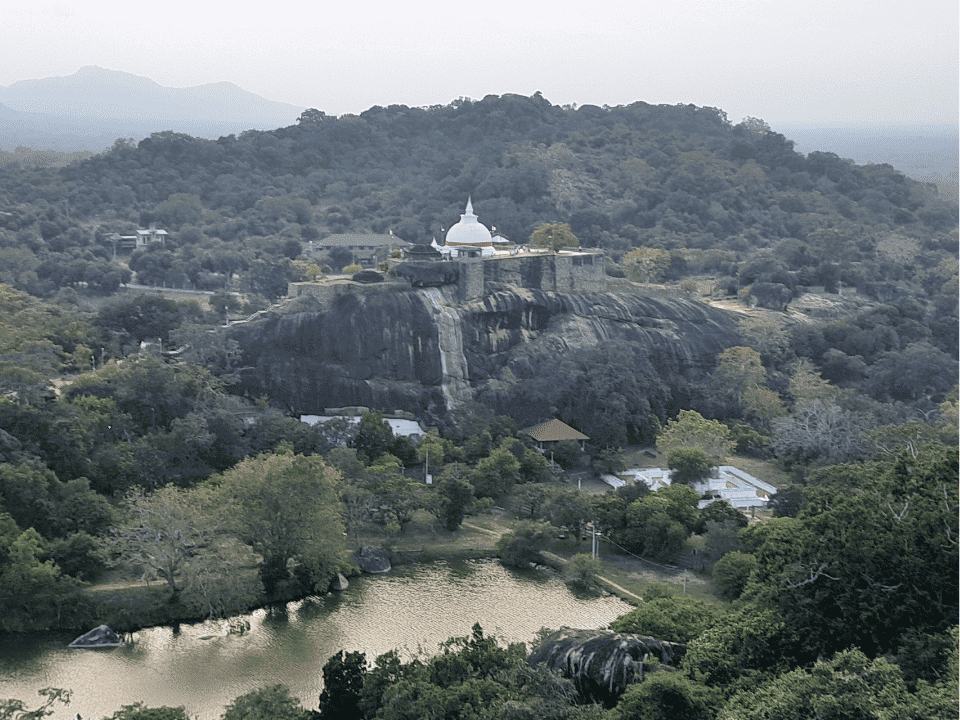Among the most well-known and most revered historical places in Sri Lanka, or at least in its Southern Province near Yala National Park, the rock of Sithulpawwa was once both a temple and a proper monastery home to thousands of saintly monks since the 3rd Century BC. Thus it can trace its history right back to the introduction of the Buddhist faith to the island, the reign of King Devanampiyatissa of Anuradhapura. He went on a zealous spree when it came to building monuments in honor of the new philosophy. One of these was the Chittala Pabbatha or Pawwatha Monastery of the Hambantota District, currently referred to as Sithulpawwa.
The main stupa is large and stands up conspicuously at a distance. It was built here by first flattening the top of the rock and then creating the monument as a whole.
One of the older sections of this temple is a cave with paintings inside it that dates back to the 3rd Century itself. Yet much of the original form of the rock and the associated forms have since been untouched even through the centuries of builders renovating it. A row of large rocks is used to demarcate the yard surrounding the main stupa. There are also statues that come from a slightly later date, probably during the heyday of Mahayana Buddhism in Sri Lanka. There is a figure of Bodhisattva Avalokitesvara, as well as an image of a man in sagely robes. Another is the Mahayana goddess Thara, a popular figure in Sri Lankan temples as the Anuradhapura era reached its median point. Several Buddha images and a figure of a royal have also been discovered on-site.
Written by Vasika Udurawane for Travel Lanka Compass



0 Comment